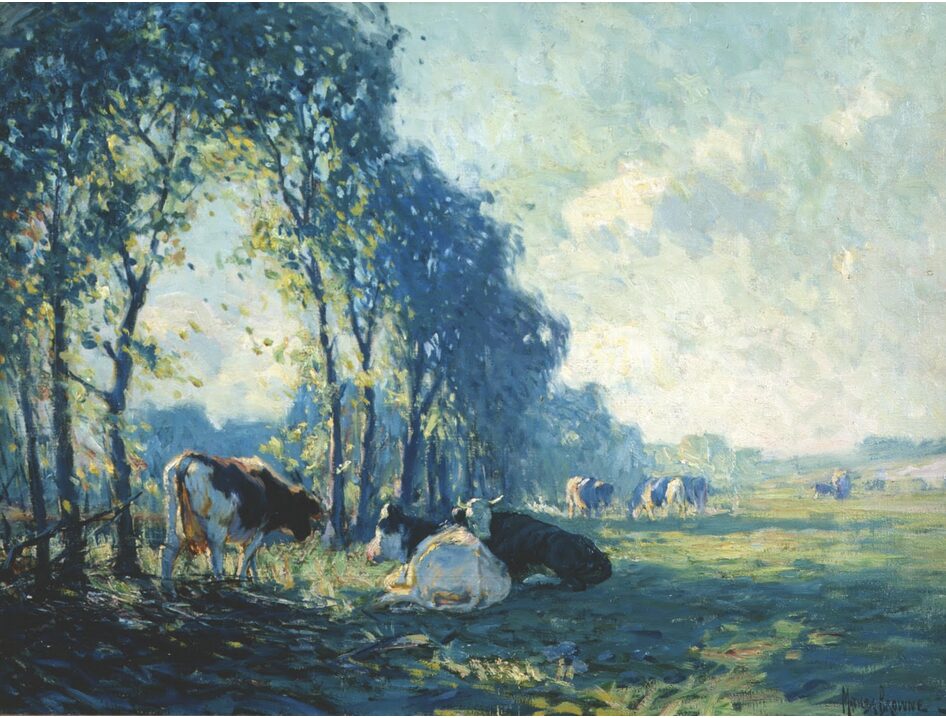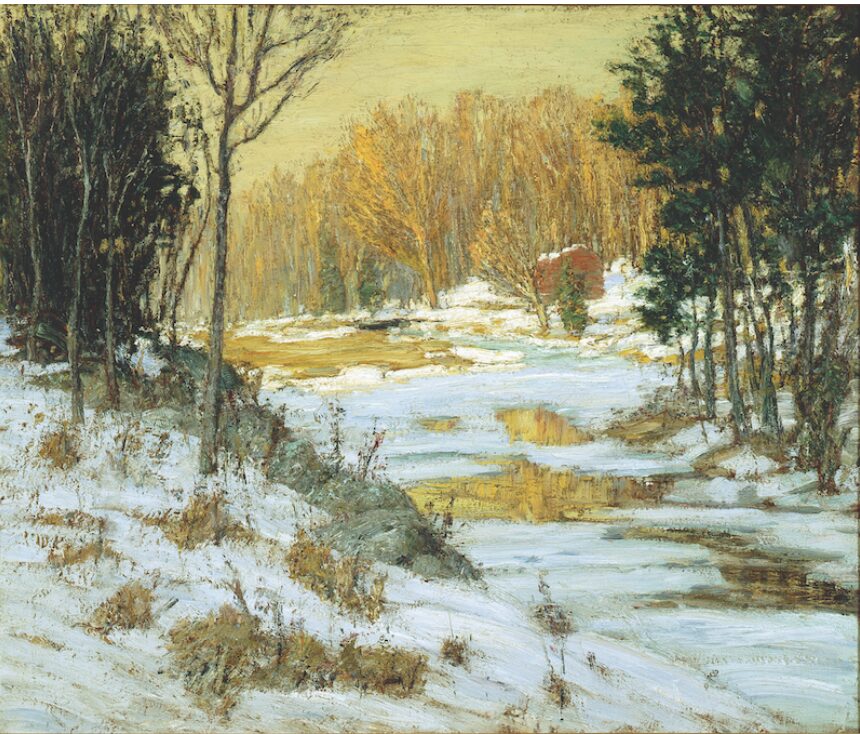Drawn entirely from the Bruce Museum’s permanent collection, “Nature’s Impressions: The Modernist Landscape,” opening November 9, considers how late 19th-century artistic responses to nature were informed by both avant-garde experimentation and the particularities of place.
In Connecticut and elsewhere, the regional character of the Northeastern United States inspired artists and the colonies they formed in this period to develop distinct aesthetic approaches to the landscape. Organized geographically, the works in the exhibition represent attempts not only to capture the essential spirit of specific locales in New England and the Hudson River Valley, but also to register the painters’ own unique visual, artistic and modern impressions of their world.

Matilda Browne (American, 1869–1947) “August Morning,” c. 1919 Oil on canvas, 24 x 32 in. Bruce Museum, 00026
The title is inspired by a quote from artist Childe Hassam, whose work is included in the exhibition. In it, he speaks to the essential relationship not only between art and nature but also between the artist’s eye and mind, recognizing that it is the artist’s interpretation — their “impression” — of the landscape that is translated from direct observation to its rendering in paint.
Hassam’s use of the term “impression” also calls to mind French Impressionism, the popular style of painting that first debuted in Paris in April 1874. Presented on the 150th anniversary of that exhibition, “Nature’s Impressions: The Modernist Landscape” traces the impact of the Impressionist movement on artists working in the United States. In the artists’ colonies at Cos Cob and Old Lyme, Connecticut, for example, Hassam adopted and advocated its novel approaches to light and color, emboldening his fellow artists to produce Impressionist paintings, some of which would become the first to be exhibited at and purchased by the Bruce. Several of these early acquisitions will be featured in the installation alongside more highly composed and meticulously rendered landscapes painted in Maine, Massachusetts and New York. “Nature’s Impressions: The Modernist Landscape,” will be the Museum’s first permanent collection installation on long-term view since the William L. Richter Art Wing opened in 2023.

Childe Hassam (American, 1859–1935) “The Mill Pond, Cos Cob,” 1902 Oil on canvas 26 ¼ x 18 ¼ in. Bruce Museum, 94.25
“The paintings in this installation demonstrate the renewed currency of the American landscape as an artistic subject at the turn of the 20th century,” said Jordan Hillman, curatorial associate. “Inspired by the French Impressionists and their Barbizon predecessors — whose works are on view in the nearby William L. Richter Gallery — many artists returning from Europe settled in the more rural corners of the Northeast, where they found inspiration, revitalization and community in the diverse and distinctly American landscapes they encountered. Featuring works by Matilda Browne, George Wharton Edwards, Martin Johnson Heade, Samuel Harkness McCrea, Leonard Ochtman, John Henry Twachtman and others, ‘Nature’s Impressions: The Modernist Landscape’ reveals the development of unique, place-based styles of art making in the United States.”

Samuel Harkness McCrea (American, 1867–1941) “The Red Barn,” 1910 Oil on canvas, 29 ½ x 35 ½ in. Bruce Museum, Gift of the artist, 1932, 18078
“Nature’s Impressions: The Modernist Landscape” is organized by the Bruce Museum and curated by Jordan Hillman, curatorial associate. Support for “Nature’s Impressions: The Modernist Landscape” is generously provided by Connecticut Department of Economic and Community Development, Connecticut Humanities and the Charles M. and Deborah G. Royce Exhibition Fund.

Henry Ward Ranger (American, 1858–1916) “Untitled (seascape),” n.d. Oil on canvas, 18 x 25 ¾ in. Bruce Museum, Gift of the estate of Katherine S. Deutsch, 91.13